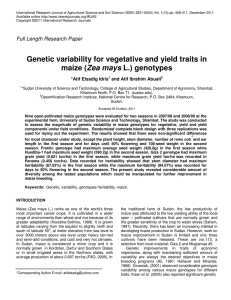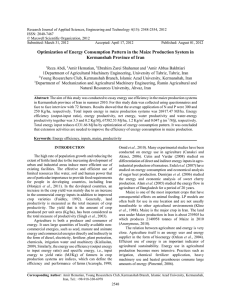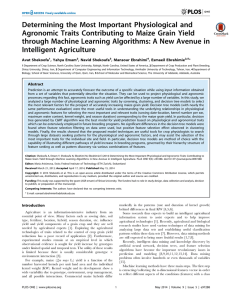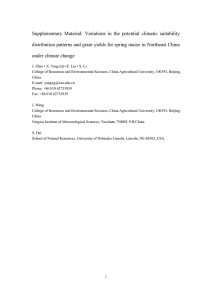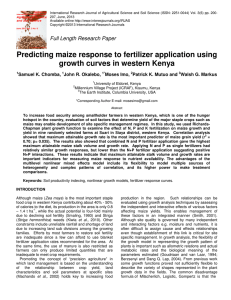HULIQ, NC 09-21-07 Simulating kernel production influences maize model accuracy
advertisement
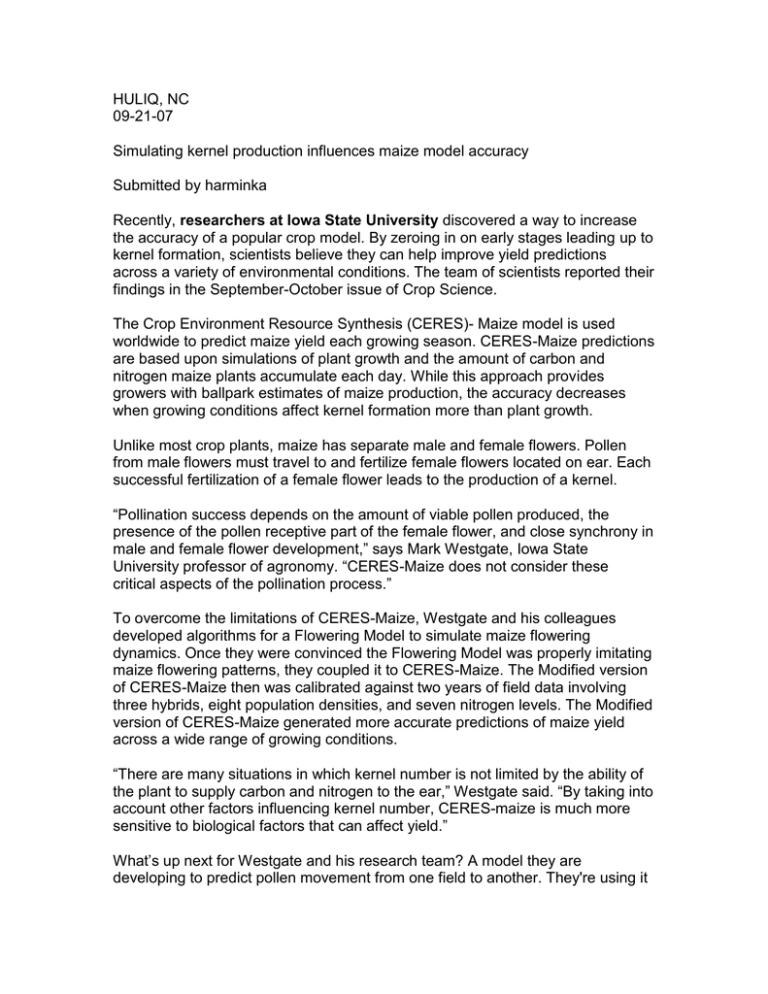
HULIQ, NC 09-21-07 Simulating kernel production influences maize model accuracy Submitted by harminka Recently, researchers at Iowa State University discovered a way to increase the accuracy of a popular crop model. By zeroing in on early stages leading up to kernel formation, scientists believe they can help improve yield predictions across a variety of environmental conditions. The team of scientists reported their findings in the September-October issue of Crop Science. The Crop Environment Resource Synthesis (CERES)- Maize model is used worldwide to predict maize yield each growing season. CERES-Maize predictions are based upon simulations of plant growth and the amount of carbon and nitrogen maize plants accumulate each day. While this approach provides growers with ballpark estimates of maize production, the accuracy decreases when growing conditions affect kernel formation more than plant growth. Unlike most crop plants, maize has separate male and female flowers. Pollen from male flowers must travel to and fertilize female flowers located on ear. Each successful fertilization of a female flower leads to the production of a kernel. “Pollination success depends on the amount of viable pollen produced, the presence of the pollen receptive part of the female flower, and close synchrony in male and female flower development,” says Mark Westgate, Iowa State University professor of agronomy. “CERES-Maize does not consider these critical aspects of the pollination process.” To overcome the limitations of CERES-Maize, Westgate and his colleagues developed algorithms for a Flowering Model to simulate maize flowering dynamics. Once they were convinced the Flowering Model was properly imitating maize flowering patterns, they coupled it to CERES-Maize. The Modified version of CERES-Maize then was calibrated against two years of field data involving three hybrids, eight population densities, and seven nitrogen levels. The Modified version of CERES-Maize generated more accurate predictions of maize yield across a wide range of growing conditions. “There are many situations in which kernel number is not limited by the ability of the plant to supply carbon and nitrogen to the ear,” Westgate said. “By taking into account other factors influencing kernel number, CERES-maize is much more sensitive to biological factors that can affect yield.” What’s up next for Westgate and his research team? A model they are developing to predict pollen movement from one field to another. They're using it along with the Flowering Model to predict the genetic purity of harvested seed. According to Westgate, genetic purity is a concern in hybrid seed production as well as for corn grown for non-genetically modified markets. -American Society of Agronomy







